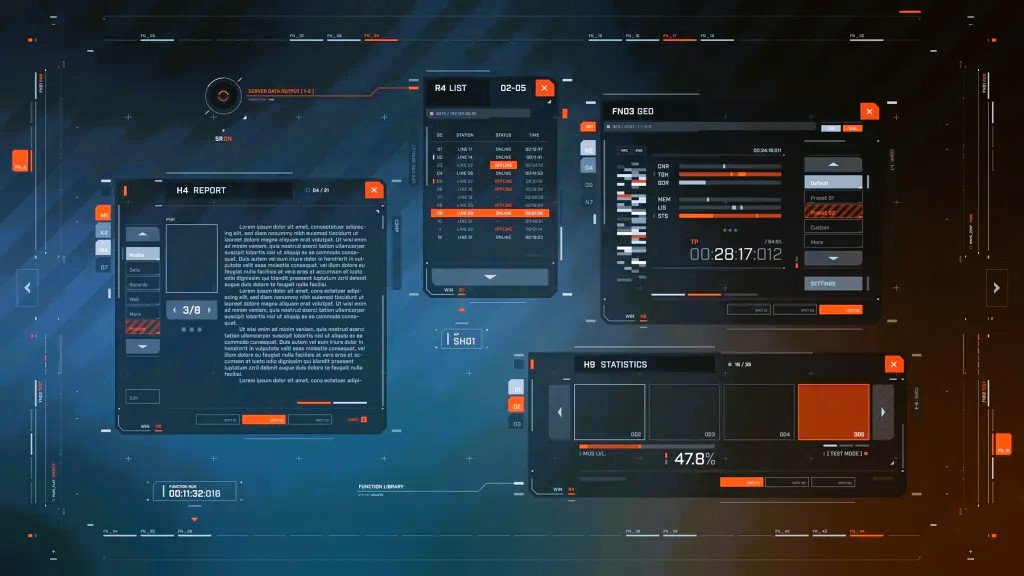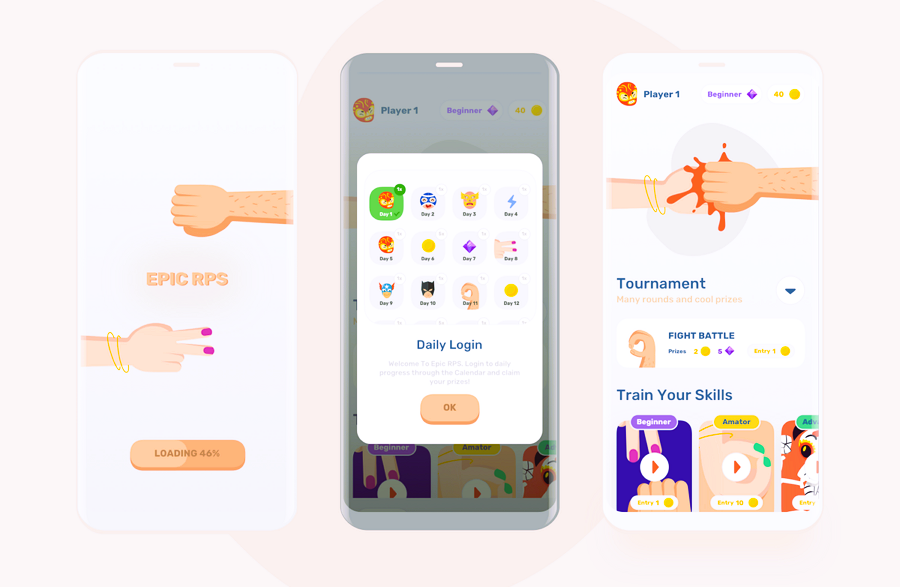In today’s gaming industry, creating cross-platform game interfaces is more important than ever. With players using a variety of devices, from PCs and consoles to mobile phones and VR headsets, it’s essential to design game UIs (user interfaces) that work seamlessly across all platforms. Whether you’re building a mobile game or a console title, understanding how to create flexible, intuitive, and functional UIs for different devices is key to keeping players engaged. This article explores useful tips and tricks for developing cross-platform game interfaces, focusing on consistency, responsiveness, and usability.
Why Cross-Platform Game Interfaces Matter
Players are no longer limited to a single platform when it comes to gaming. Cross-platform play has become a standard feature, and players expect to have a consistent experience, regardless of whether they’re playing on a PC, console, or mobile device. A well-designed game UI that adapts across various platforms enhances user experience, reduces friction, and ultimately leads to higher player retention.
According to a Wikipedia article on game design, “a game’s user interface is crucial in ensuring players understand how to interact with the game, which is why consistency and clarity across platforms is essential.”
1. Focus on Flexibility
When designing a cross-platform UI, flexibility is paramount. Each platform has its unique characteristics: a mobile game needs to work on small touchscreens, while a console UI must be navigable with a controller. The goal is to create a UI that adjusts to the platform’s limitations without sacrificing functionality or aesthetics. Here are some tips:
- Adopt Responsive Design: A responsive UI automatically adjusts to different screen sizes and resolutions. Use flexible layouts that resize elements based on the screen’s dimensions, ensuring everything looks proportional.
- Use Scalable Elements: Avoid hardcoded pixel sizes. Instead, use scalable vector graphics (SVGs) that ensure your elements maintain clarity and sharpness, whether viewed on a small mobile screen or a large television.
2. Simplify Navigation

Cross-platform game interfaces should make navigation intuitive, regardless of the platform. While a mobile game might rely on swipes and taps, a console UI needs to account for gamepad controls. Here are some tips for simplifying navigation:
- Consistency is Key: Whether on mobile, PC, or console, try to keep the core navigation elements in the same location on the screen. Consistency makes it easier for players to transition between platforms.
- Smart Controls: Consider using control schemes that adapt depending on the platform. On mobile, players will use touch gestures, while on a PC or console, keyboard and controller inputs can be used. By customizing controls, you avoid frustrating the player with awkward or clunky interactions.
3. Account for Input Methods
One of the biggest challenges in cross-platform design is dealing with the variety of input methods. While mobile games rely on touch controls, PC and console games often use a keyboard and mouse or gamepads. Here’s how to handle it:
- Platform-Specific Controls: In some cases, it’s best to design separate UI elements for different platforms. For example, mobile users might require larger buttons for easier tapping, while PC users might prefer smaller, more precise controls.
- Dynamic UI Elements: On PC or console, consider creating a UI that displays platform-specific control prompts. For instance, when using a controller, show controller button icons instead of keyboard keys. This eliminates confusion and improves usability.
4. Consistent Visual Design
Visual consistency is essential when creating a cross-platform UI. While design elements may need to adjust based on the platform, the overall visual identity should remain consistent across devices.
- Unified Branding: Maintain consistent color schemes, typography, and iconography. This helps reinforce the game’s identity, making it instantly recognizable to players, regardless of the platform.
- Adaptive Layouts: Some platforms may have unique screen orientations (e.g., landscape vs. portrait mode), so ensure your game UI is designed with adaptability in mind. Elements should flow naturally, adjusting to the available screen space.
5. Test, Test, Test
Testing your cross-platform game UI is crucial. Each platform may present unique challenges, from different screen sizes to input methods. Comprehensive testing across all devices is necessary to ensure that your UI is not only functional but also user-friendly. 10 main features of Armature that every game designer should know, more details in our article.
- Device Testing: It’s vital to test on actual devices, not just simulators or emulators. This gives you a realistic understanding of how your UI will behave across platforms.
- User Feedback: Get feedback from players who use different platforms. Their insights can help you identify issues that may not be apparent during testing.
6. Performance Considerations

Cross-platform interfaces must not only look good but also perform well. Optimization is critical, especially when dealing with mobile platforms, which may have less processing power than high-end PCs or consoles.
- Optimize Assets: Use compressed graphics and streamlined code to minimize loading times and ensure the interface runs smoothly.
- Ensure Stability: Make sure that the UI works under different network conditions, especially for online multiplayer games.
7. Use Cross-Platform Tools
When building cross-platform UIs, leveraging the right tools and technologies can save time and improve efficiency. Many modern development environments allow you to design interfaces that work across multiple platforms with minimal adjustments.
- Unity and Unreal Engine: Both of these game engines offer robust UI design systems that are cross-platform by nature. With these engines, you can design UI elements once and deploy them across PC, mobile, and console without significant changes.
- Armature: Tools like Armature, which are designed specifically for rapid UI prototyping in Adobe Illustrator, allow designers to create interfaces that can be easily adapted for cross-platform use.
Creating a cross-platform game interface requires careful planning, flexibility, and attention to detail. By focusing on responsive design, simplifying navigation, accounting for diverse input methods, and ensuring visual consistency, you can create UIs that work seamlessly across platforms. Testing and optimizing your design across all devices ensures that your game will provide an engaging experience no matter how players choose to play.
With the right tools, such as Unity, Unreal Engine, and Armature, and by following the tips outlined above, you can ensure your game interfaces stand out and deliver a smooth, enjoyable experience to players on any platform.




